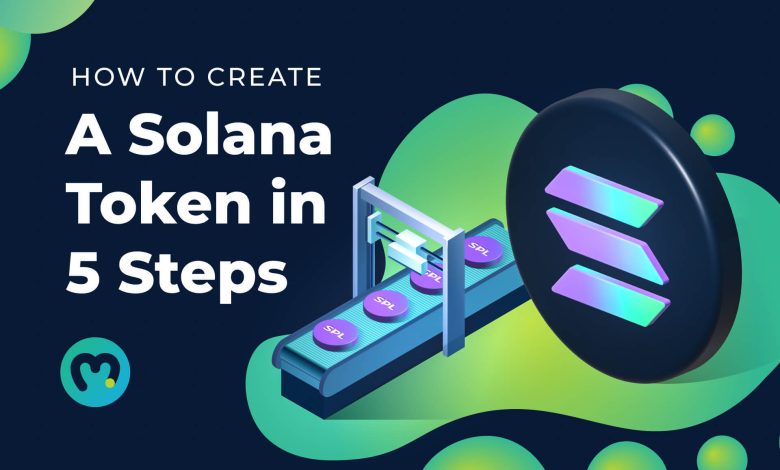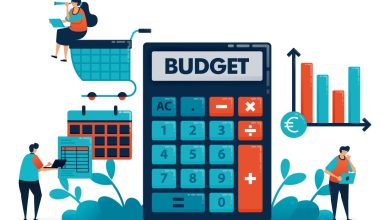Analyzing The Step-By-Step Process To Create A Solana Token

Indeed, the scalability issues hovering on the ethereum blockchain network have driven the rise of possible choices. Solana, the fastest-growing platform, was launched in January 2018. It has become a hub for web 3.0 projects, including payments, gaming, decentralized finance, and NFTs. Besides, it is a Switzerland-based platform providing a wide range of benefits like fast processing of transactions, interoperability, scalability, user-friendly space, and resistance against censorship. Now, without wasting any further time, let’s get started to know why you invest in Solana token development.
How Is Solana Better Than Ethereum?
- Project creators will profit from composability. Solana ensures that investors don’t require to deal with any two layers of solutions or shared chains.
- For a long period, users were concerned about high gas fees on Ethereum. However, Solana prevents this by charging the transaction fee of just $0.01 for developers and investors.
- It also operates blocks within just 400 milliseconds. This marks the uninterrupted functioning of the decentralized network.
- Overall, Solana has developed around 140 Decentralized Autonomous Organizations (DAOs). It can manage a whopping $1 billion of funds, and the transaction fee is only $0.025.
- Users who attain a Solana token can cast their votes on multiple proposals and interact smoothly with the community without spending much money. Moreover, they also gain from the greater output and low latency.
- Investors can also keep an eye on their portfolios. As a renowned Solana Blockchain Development Company, we ensure clarity. Users can look upto Sol Scan and view data about the transactions, blocks, programs, and tokens. Moreover, it shows the status of the price of $SOL tokens, transaction count, market capitalization, current epoch, block height, slot height, and the rewards in Solana (SOL) tokens.
- Overall, a huge $7.6 billion has been secured in Solana’s Decentralized Finance (DeFi) and NFT projects. Hence, this has made it the top option for developing Decentralized Applications (DApps) across industries.
- Intriguingly, around 5.7 million NFTs have been minted on Solana, and the standard minting cost is only $1.50.
- Undoubtedly, Decentralized Finance (DeFi) is controlling the growth of Solana. For instance, investors have locked a massive $11 billion in 274 projects on the platform. The 24-hour sale volume is around $430 million, and the average transaction fee is only $0.18.
What Is The Procedure To Develop A Solana Token?
Assemble the tech stack – Solana performs on the Anchor framework. This helps developers develop smart contracts and set Decentralized Applications (DApps). The Anchor framework works as a toolchain. Hence, it blends the power of various programming languages like Solidity, Ether.js, Truffle, and Ganache.
Subsequently, blockchain specialists can create a program and deploy it to the local cluster. Subsequently, the Interactive Data Language (IDL) shares quantitative and qualitative information. This guarantees a seamless connection with the crypto exchanges and Decentralized Finance (DeFi) platforms. Later, developers should enter the private key and operate the transaction on the local net.
Integrate wallets – Unquestionably, SOL tokens behave as the backbone of the Solana blockchain network. Solana supports various sorts of wallets. This helps users to smoothly interact with the Command-Line Tools. Investors can use a variety of File System Wallets, Paper, and Hardware wallets.
Users can use their personal computers (PCs) for handling their crypto assets. Investors have full liberty in producing an unlimited number of keys.
Crypto holders can also use paper wallets for conserving their digital assets. For instance, they can secure their funds with 12-24 recovery phrases. Investors can also keep their digital assets on hardware wallets like Ledger Nano S, Nano X, and Trezor One. Generally, these devices work in the form of a secure chip. Users can access features like Bluetooth integration, a staking facility, a lending mechanism, and integration with different Decentralized Applications (DApps).
Moreover, cold wallets hinder Man-In-The-Middle (MITM) attacks. Users can approach a transaction only after a dual verification mechanism. That occurs when the public key of both the spender and the payee matches. Investors profit from confidentiality. That is because a common secret phrase is produced. Consequently, the hardware wallet and the user’s smartphone present the same numeric code.
Integrate Plugins –
Sometimes, there may be a huge load on the Solana blockchain network. Generally, this happens when validators suffer Heavy Remote Procedure Call (RPC) loads.
Solana secures this by extracting data from external sources. Hence, it does not use centralized database management systems like SQL and Kafka.
Hence, plugins are mechanically attached to validators when it starts. The JavaScript Object Notation (JSON) file holds all the details like the account data, metadata, and transaction status.
Beyond that, higher output is assured, as plugins enable connection pooling by utilizing various threads. Each thread joins directly to the PostgreSQL database. In the long term, validators who do not have enough computing power will fall behind the network. What happens when a huge number of accounts get chosen.
Specifically, you can decrease latency by holding the validator and the PostgreSQL in the same local network. In overburdening, it is important to size the validator and database nodes.
Set up the node – In case while setting up a Cryptocurrency Exchange or a Decentralized Finance (DeFi) platform, you should set up 2 nodes. It provides advantages like a direct gateway to the basic net and access to real-time data about deposits, withdrawals, and transactions.
It represents data about the identity key pair, a cluster keypoint, expected genesis hash, transaction history, and validator address. Investors can immediately deposit SOL tokens into the cryptocurrency exchange by shifting a definite amount to the eligible deposit address.
Later on, you can know the status of the batch of transactions by hitting the Get Signature statuses section. Solana also measures real-time updates about the Transactions Per Second (TPS), the total transaction count, and the confirmation time of each validator node.
Wrapping Up
The main emphasis of Solana rests in promoting an autonomous economic system. Hence, protocol-based benefits will decide the future of cryptocurrency and blockchain Development. Generally, the incentives get computed per epoch and are shared with all the representatives and set of validators. Solana will also focus on a schedule to prevent rising transaction fees. This will rely on aspects like the number of participants and bifurcation.




